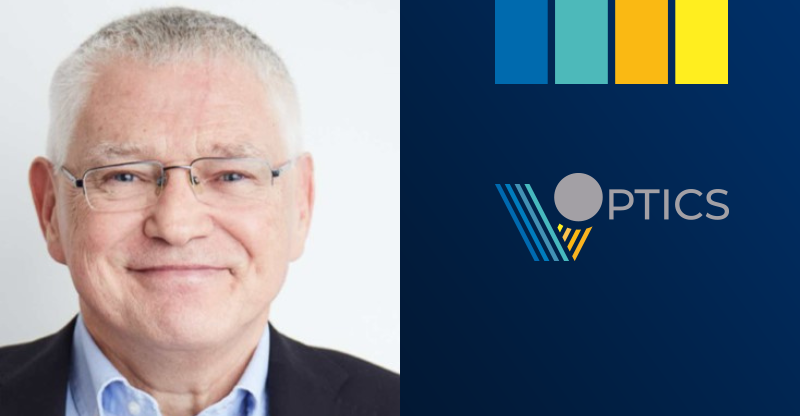To better understand the perception of automated quality control solutions for optical components, we spoke with Dominique Bonnisseau, PhD, a recognised expert in the photonics and optics markets. With his experience in the commercial development of high-tech solutions and connections spanning Europe, Canada, China, Korea, and Japan, Dominique shares his insights on the innovations brought by V-OPTICS.
V-OPTICS. To start with, could you explain why surface quality and material purity are such critical aspects in the optical components industry?
Dominique Bonnisseau. Surface quality and material purity are essential because they directly impact the performance of transparent optical components. Any surface defect or internal impurity can interfere with the path of light, thus compromising the function of the optical element. This is particularly important for applications such as precision lenses, medical devices like intraocular implants, and optical systems used in high-tech industries.
The challenge of manufacturing these components is twofold. On the one hand, it is necessary to use pure materials. But on the other hand, during the manufacturing process, treatment operations such as polishing or adding anti-reflective coatings can generate scratches, cracks, holes and other defects. It is essential to identify, measure and sort these. The problem has remained the same since the invention of eyeglasses or lenses: defects must not distort the image.
V-O. You mentioned the importance of the quality of materials and surfaces. How are these elements typically inspected in the industry today?
D.B. Most inspections in the optical industry are still carried out manually, even in the largest companies. It’s a time-consuming and meticulous operation that relies on the expertise of trained operators. These experts play a key role in evaluating the components, but the process is time-consuming, somewhat subjective and can lead to human error. Manual inspections are also costly, as it often takes several months to train these operators, not to mention the difficulty of maintaining consistent quality.
This is where V-OPTICS’s innovation is a game-changer. By automating these processes, we introduce objectivity and greater precision, speeding up inspection times while ensuring repeatability.
V-O. The industry seems highly dependent on manual inspections. What is the main resistance to automation that you have observed?
D.B. The biggest resistance comes from a certain conservatism within the optics and photonics industry. Many manufacturers tell me, “We’ve been doing it this way for 30 years, so why change?” They prefer not to change their tried-and-tested methods, even if they are time-consuming. There is also a form of disbelief. Companies are reluctant to believe that an automated solution can outperform traditional methods. Moreover, in the past, some attempts at automation have failed, either because the systems were too slow, too expensive, too complicated or because they were not accurate or reliable enough.
V-O. Can you explain why you think that V-OPTICS’s solution can succeed where others have failed?
D.B. What is different about the V-OPTICS technology is that the solution is accessible in terms of cost and integration. It is based on phase-shift deflectometry, an optical technology that is simple, accurate, reliable and robust.
The system is easy to implement and robust enough to fit into production environments, which is not always the case with other metrology solutions that require delicate laboratory conditions or precise adjustments.
V-O. You’ve mentioned the ease of integrating the solution into production environments. Could you expand on this aspect?
D.B. Absolutely. One of the key advantages of V-OPTICS’s technology is its ease of use. Unlike other measurement systems, which are often complex and require laboratory-type environments, V-OPTICS solutions can operate directly on production lines.
Moreover, the machines are much simpler to use than other technologies, such as interferometry, which requires extremely precise positioning of the parts to be inspected and great care. This is what struck me from the first demonstration I attended at V-OPTICS. The operator can place the sample to be inspected in a relatively flexible way and the system automatically adjusts to compensate for slight deviations in positioning. This makes it very easy to install and use in an industrial setting.
V-O. How could the V-OPTICS solution play a role in the evolution of the optical industry?
D.B. The optical industry is still largely dominated by manual processes, but it’s becoming increasingly clear that automation is the key to the future. V-OPTICS has the potential to transform this sector by enabling more accurate, reliable, and cost-effective quality control.
Another major advantage is the reproducibility of the results. It’s important to note, however, that like any measuring device, the results are reproducible within the measurement range. This makes it possible to standardise quality control, which is a major step forward in an industry where the standards are complex, as is their application. In the long term, it could even help to set new standards in the sector.
V-O. To conclude, what are the next steps to ensure wider adoption of this technology?
D.B. I think the key lies in continuously demonstrating the reliability of the solution and working with market leaders.
Companies are often cautious and conservative, but once they see tangible results, they are more inclined to adopt these technologies. A few big names have already validated the technology, so the snowball effect will work in favour of its adoption.

